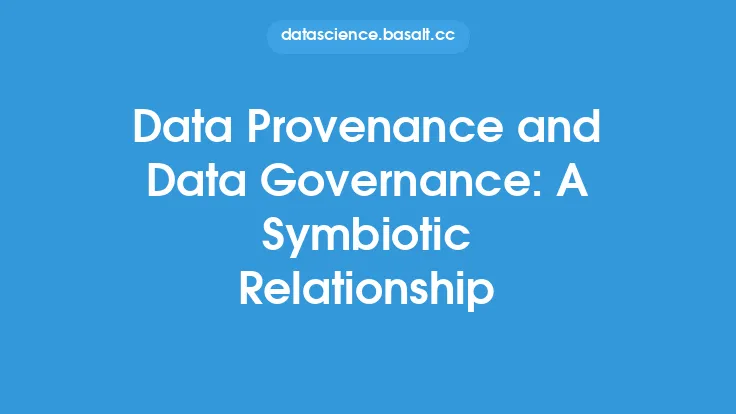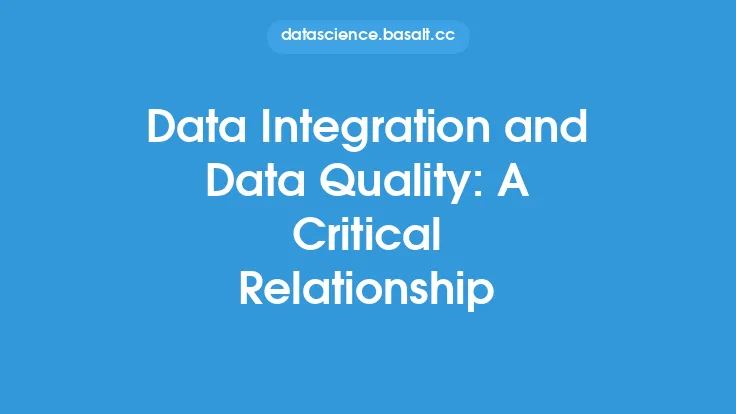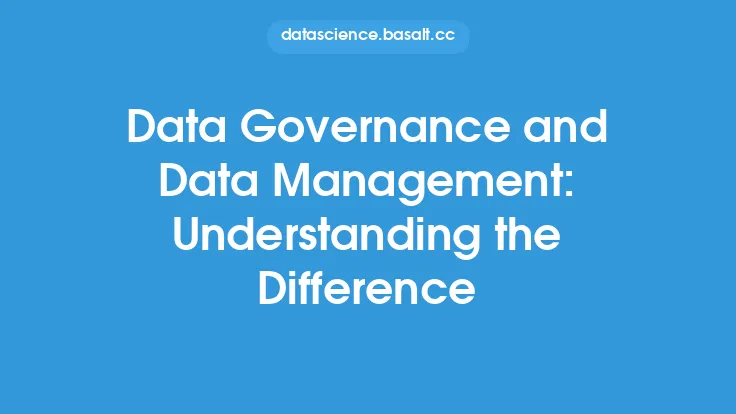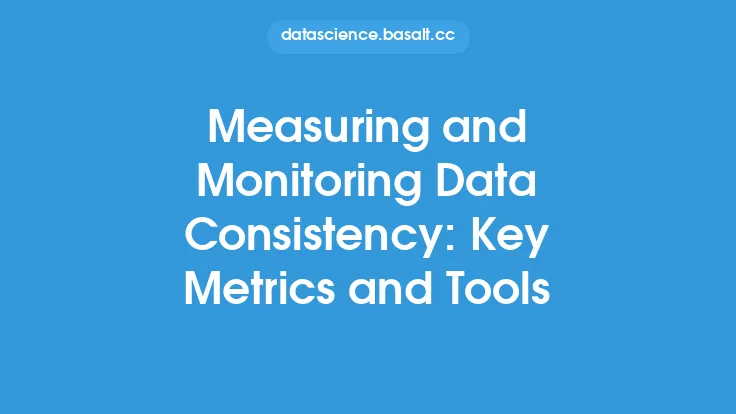Data consistency is a critical aspect of data quality, and it is closely tied to data governance. Data governance refers to the overall management of the availability, usability, integrity, and security of an organization's data. It involves the establishment of policies, procedures, and standards to ensure that data is accurate, complete, and consistent across the organization. In this context, data consistency is a key component of data governance, as it ensures that data is reliable and trustworthy.
Introduction to Data Governance
Data governance is a holistic approach to managing data, and it involves multiple stakeholders and departments within an organization. It is a framework that outlines the roles, responsibilities, and processes for managing data, and it provides a structured approach to ensuring data quality. Data governance involves the establishment of policies, procedures, and standards for data management, as well as the implementation of controls and monitoring mechanisms to ensure compliance. It also involves the development of a data governance organization, which includes a data governance council, data stewards, and data quality teams.
The Role of Data Consistency in Data Governance
Data consistency is a critical aspect of data governance, as it ensures that data is reliable and trustworthy. Consistent data is essential for making informed business decisions, and it is critical for ensuring the accuracy and reliability of analytics and reporting. Data consistency involves ensuring that data is accurate, complete, and consistent across the organization, and it requires the establishment of standards and policies for data management. It also involves the implementation of controls and monitoring mechanisms to ensure compliance with these standards and policies.
Data Governance Frameworks
There are several data governance frameworks that organizations can use to establish a data governance program. These frameworks provide a structured approach to data governance, and they outline the key components and processes involved in managing data. Some of the most common data governance frameworks include the Data Governance Institute's (DGI) framework, the Data Management Association's (DAMA) framework, and the International Organization for Standardization's (ISO) framework. These frameworks provide a comprehensive approach to data governance, and they include components such as data strategy, data architecture, data quality, and data security.
Data Quality Dimensions
Data quality is a critical aspect of data governance, and it involves ensuring that data is accurate, complete, and consistent. There are several data quality dimensions that organizations can use to evaluate the quality of their data, including accuracy, completeness, consistency, timeliness, and validity. These dimensions provide a comprehensive approach to evaluating data quality, and they can be used to identify areas for improvement. Data quality dimensions are also closely tied to data consistency, as consistent data is essential for ensuring the accuracy and reliability of analytics and reporting.
Data Consistency Techniques
There are several techniques that organizations can use to ensure data consistency, including data standardization, data validation, and data reconciliation. Data standardization involves establishing standards for data management, such as data formats and data codes. Data validation involves checking data for accuracy and completeness, and data reconciliation involves comparing data from different sources to ensure consistency. These techniques can be used to ensure data consistency across the organization, and they are critical for ensuring the accuracy and reliability of analytics and reporting.
Data Governance Tools
There are several data governance tools that organizations can use to support their data governance program. These tools include data governance software, data quality software, and data security software. Data governance software provides a comprehensive approach to data governance, and it includes components such as data cataloging, data lineage, and data quality monitoring. Data quality software provides a range of tools for evaluating and improving data quality, including data validation, data cleansing, and data transformation. Data security software provides a range of tools for protecting data, including encryption, access controls, and auditing.
Implementation of Data Governance
Implementing a data governance program requires a structured approach, and it involves multiple stakeholders and departments within an organization. It starts with establishing a data governance council, which is responsible for overseeing the data governance program. The council is responsible for developing a data governance strategy, which outlines the organization's approach to data governance. The strategy should include components such as data quality, data security, and data compliance. The council is also responsible for establishing a data governance organization, which includes data stewards and data quality teams.
Challenges and Opportunities
Implementing a data governance program can be challenging, and it requires significant resources and investment. One of the biggest challenges is getting stakeholders to buy into the program, and to understand the importance of data governance. Another challenge is establishing a data governance organization, and ensuring that it has the necessary resources and support. However, there are also opportunities for organizations that implement a data governance program. These opportunities include improved data quality, increased efficiency, and better decision-making. A data governance program can also help organizations to reduce risks, and to improve compliance with regulatory requirements.
Conclusion
In conclusion, data consistency and data governance are closely tied, and they are both critical for ensuring the quality and reliability of an organization's data. Data governance provides a comprehensive approach to managing data, and it involves the establishment of policies, procedures, and standards for data management. Data consistency is a key component of data governance, and it involves ensuring that data is accurate, complete, and consistent across the organization. By implementing a data governance program, organizations can improve data quality, increase efficiency, and make better decisions. They can also reduce risks, and improve compliance with regulatory requirements.





